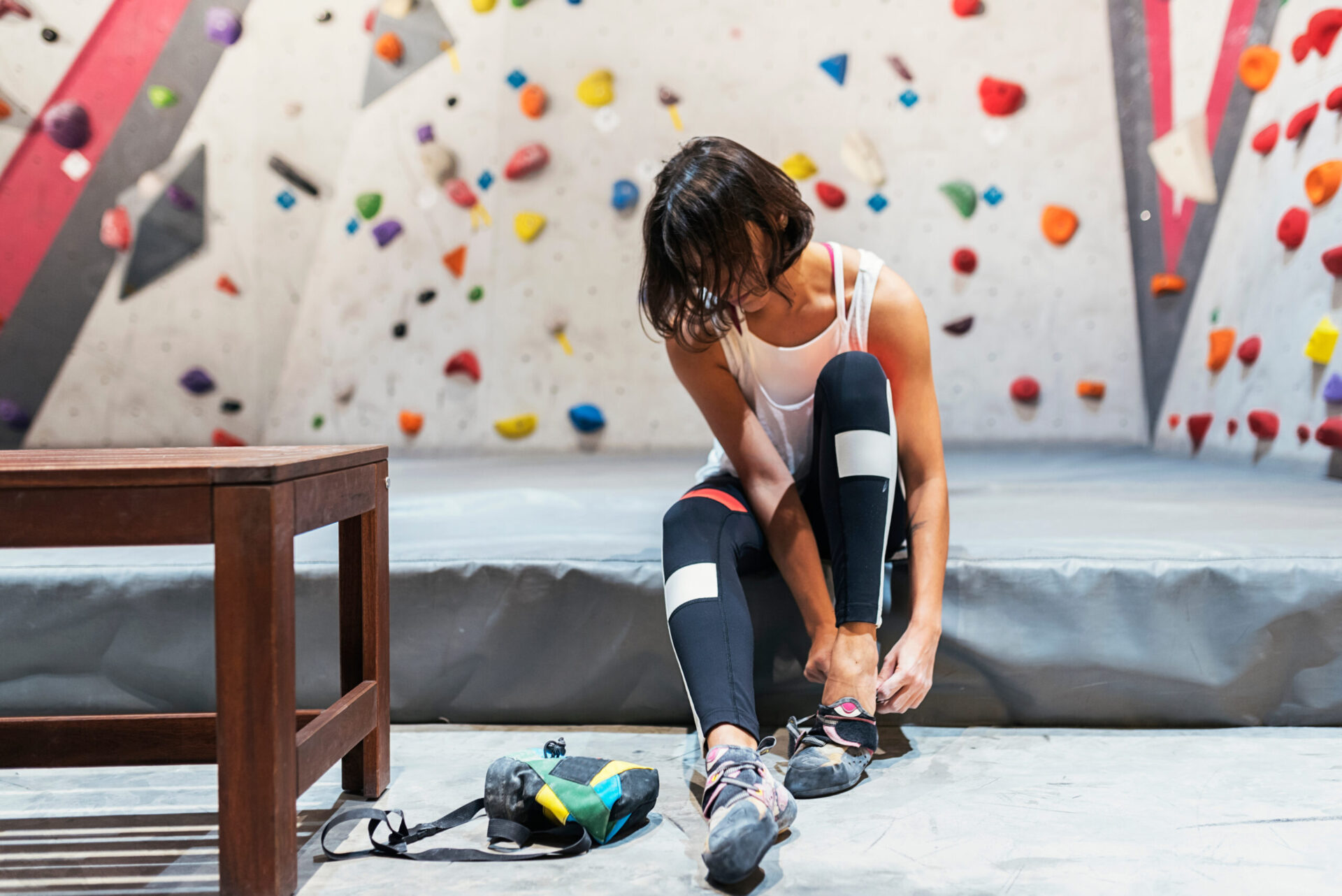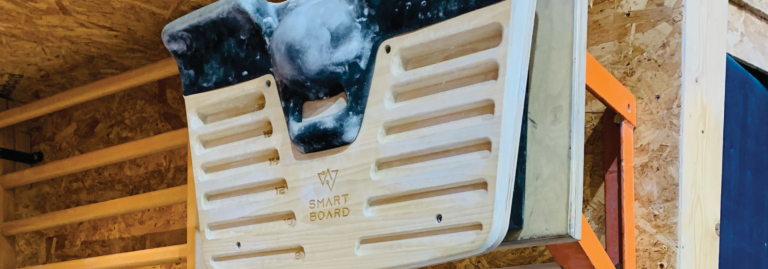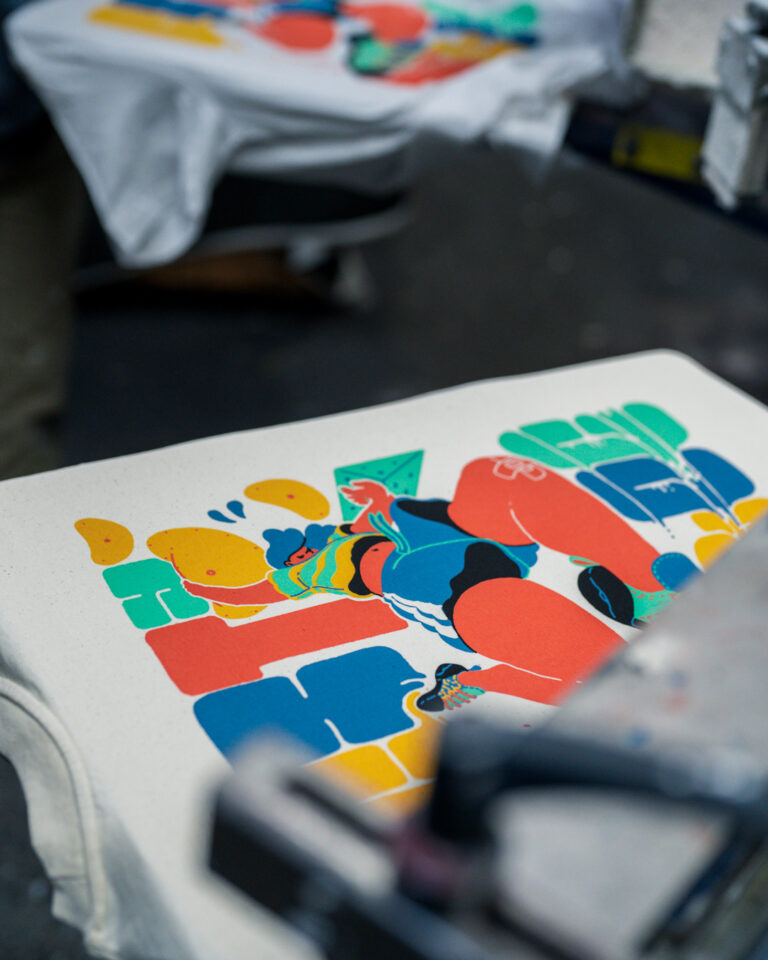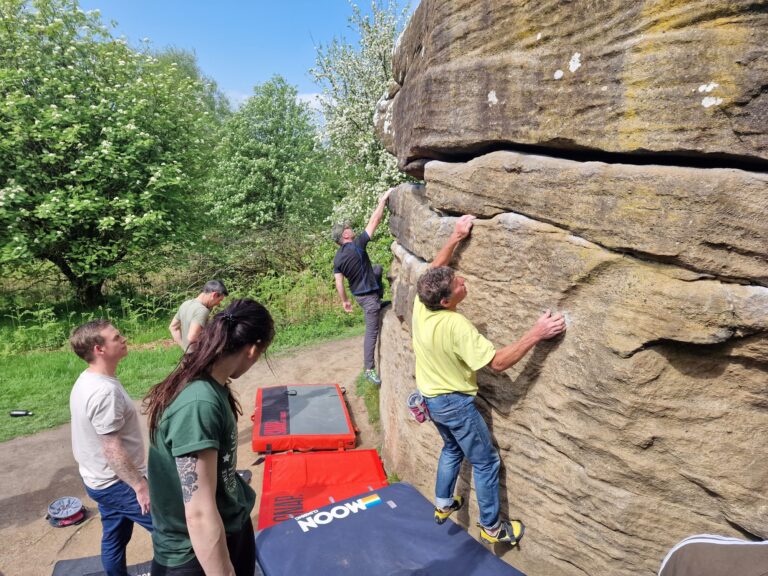Gear, fear, strength and community: Everything you need to know to start bouldering
It’s scary starting a new sport or hobby, especially if you’ve never tried anything like it before. So we want to take the fear out of your first climb by tackling some of those initial questions you might have. We can’t wait to welcome you into the City Bloc community.
What is bouldering?
Unlike sport climbing (which involves the use of ropes and harnesses), bouldering is the cool and casual member of the rock-climbing family, needing minimal gear and experience. It began as a method of training for climbing on big walls, and has evolved into its own sport; with its participants ranging from casual climbers to professional athletes competing in the Olympics (alongside a couple other disciplines of climbing). Bouldering walls tend to be about 4.5 meters tall, and indoor walls will always have some sort of cushioned landing.
Why you should do it?
Bouldering is the perfect combination of adventure fix, meets strength training, meets social hour. It can be as physical and intense as a weight lifting workout, or as chilled out as a drink in a beer garden. It’s best to start out with a few instructed sessions, as a bit of guidance can go a long way. (These are offered free at City Bloc!)
Bouldering can be done on a variety of wall angles. Climbing on more vertical walls requires delicate balance and footwork, and the steeper walls call for more powerful movements. With some basic skill however, even a brand-new climber can find themselves weight shifting and hip swivelling up a 45-degree angle!
*N.B. It is a common misconception that bouldering only “counts” when you reach the top of the climb. Even seasoned boulderers will sometimes spend an entire session trying one climb and not complete it. It’s all about challenging yourself mentally and physically, and of course having a laugh with (or at) your mates.
This sport is not only a great way to build your fitness, strength, flexibility, coordination, and bone density, but more importantly it is an amazing way to build confidence. Bouldering has been used as an intervention for tackling various mental and physical health problems, as it’s unique problem-solving demands are unmatched by any other sport. It is also distinctive from other sports in that a beginner and a seasoned veteran can have a great session together, sharing motivation and ideas, while working on their own boulder problems. Because of this, the bouldering community is one that is warm and welcoming to people of all shapes and sizes. Once you’ve experienced the satisfaction of completing a tricky boulder, you can’t help but want to share the excitement with others! So, if you want to meet lifelong friends, alleviate stress, learn new skills, and surprise yourself with strength you didn’t know you had, then my friend, bouldering is for you.
Bouldering grades and colours
The difficulty of a climb, or a boulder problem, is denoted using one a few numerical systems.
Generally, the “font bouldering” grade system is used to in the UK; this allows us to quantify the difficulty of the climb, which is good to know before attempting. For example, a suitable boulder problem to warm up would be a 4, then you might spend your session working on a climb of about 6a or 6b.
When bouldering indoors, you must follow the same colour holds (for both hands and feet) on a pre-constructed bouldering problem, and this route will have an associated grade with it. Of course, if you get stuck or need to get down safely, using all the holds you can reach to descend is encouraged, but if you want to complete a specific boulder problem and claim the grade, you must establish your weight on the wall using designated starting holds (marked with a little tag), then following that same colour all the way (with both hands and feet) to the designated finishing hold of the climb, which is often the highest hold of that colour.
Safety
When bouldering indoors you will always be above a “bouldering mat” (think big squishy gymnastics floor.) However being above a mat does not guarantee your safety. Although with the right techniques it can be avoided, serious injuries are still a possibility. Here are a few guidelines to ensure you’ll land safely every time:
1) Always climb down whenever possible! Once you have completed your climb to the finish hold, or even if you decide you want to come down after only completing half the climb, feel free to use holds of any colour that might help you get down safely. Ideally you want to climb down to a point at which you can comfortably step down from the wall.
2) Practice hopping off the wall from about 1 foot off the ground and landing with soft knees. If you lose your balance, roll backwards onto your bum and keep your arms in front of you, no harm done. Sounds like a weird thing to practice but it’s definitely worth the time and looking a little silly to know you’ll be comfortable landing if you slip unexpectedly. It’s important that you do not put your arms out to brace your fall as this can result in injury. Falling and landing comfortably and safely is a very specific skill. Don’t rush it.
Although learning how to land safely is a process in and of itself, there is still a lot of skill you can gain, and fun you can have while you’re getting used to the feeling of being off the ground.
3) Keep your distance from other climbers. Both because of the world wide pandemic, and also because being landed on by a full-size human from a great height is not comfortable. Stand back, or off the mat entirely while someone else is climbing, and wait for them to come down before starting your climb. You might feel like you’re out of the way, but climbers can fall unexpectedly far from their last point of contact, so it’s better to be safe than sorry.
Gear
One of the best things about bouldering indoors is its simplicity. All you need are climbing shoes and chalk, both of which can be hired during your visit to City Bloc. Your climbing shoes should fit tight, but comfortably. For beginners it’s recommended that your toes touch the front of the shoe (without being squished), and there shouldn’t be any painful pressure points. If you’re considering buying your own climbing shoes, the aim is to find a shoe that matches your foot shape, that way you can get a snug fit without having to go for a tiny size.
Chalk is also used in climbing to tackle sweaty hands. This can be in the form of loose powered chalk, a chalk ball, or liquid chalk.
Basic Technique Tips:
- Keep your arms straight(ish)! A lot of energy can be wasted by instinctively holding yourself up with your arms bent. Keep your knees bent instead, your weight low, and your arms straight like an orangutan swinging in the trees.
- Just the tippy toes. You should only be using the first inch or so of your climbing shoes on the foot holds. This will allow you to pivot and shift your weight as you need, which is difficult to do if you’re stood on the arch of your foot.
- Keep your centre of gravity in mind. If your base of support (your feet) are nice and wide, you will be in control of where you move your hips. Loose hips will allow you to manoeuvre your weight over your feet, allowing you to push yourself up with your legs (which are a lot stronger than your arms.)







